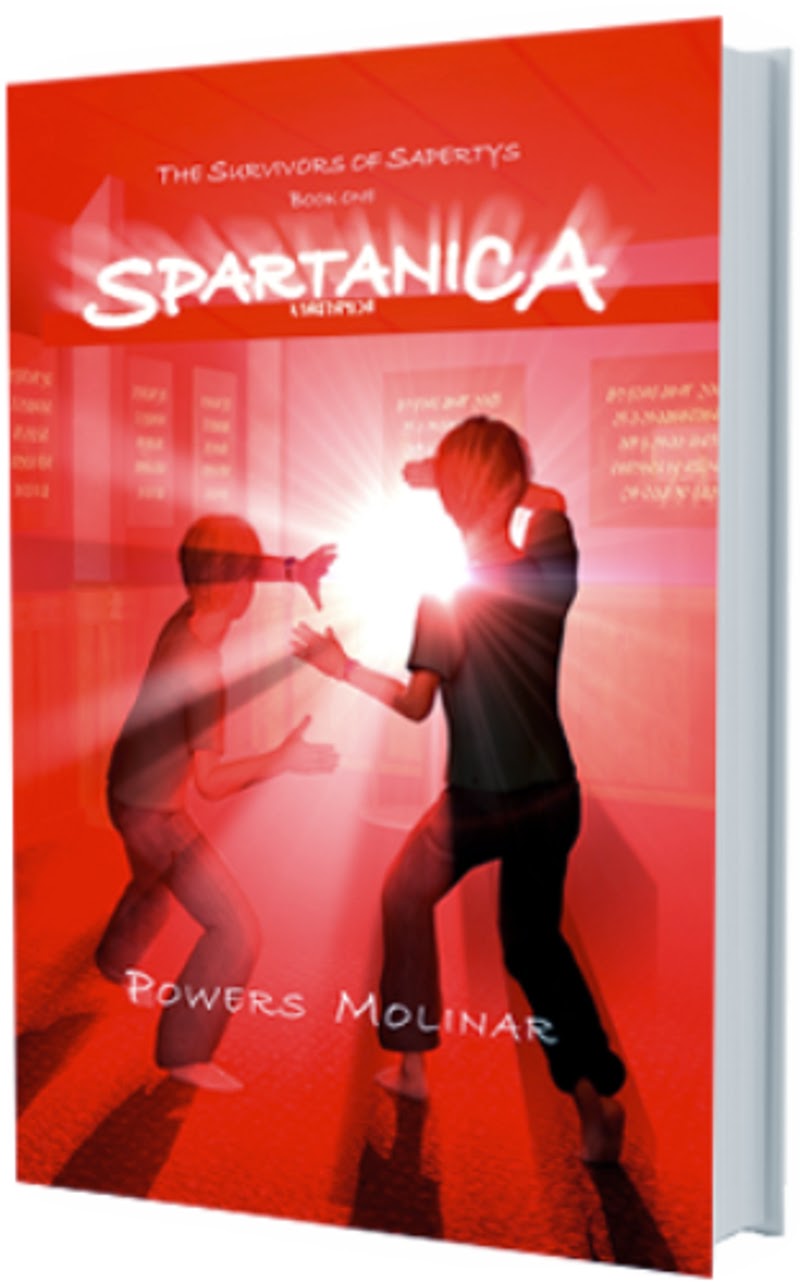Rules for the WIP Blog Tour are as follows:
1) Provide the link back to the post by the person who nominated you (see above).
2) Write a little about and give the first sentences of the first three chapters of your current WIP
3) Nominate a few other writers to do the same
My current WIP is the yet-to-be titled follow-up to my award-winning debut young adult science fiction novel, Spartanica, where middle school brothers Ty and Marcus Mitchell battle to get back to Earth after being unexpectedly pulled through an inter-dimensional gateway to a parallel world defined by planet-wide apocalypse. In their quest to escape, the brothers uncover many of Spartanica's hidden secrets, and fall prey to its predators and betrayal. Did they ever make it back? These hints from book 2 may offer clues:
Chapter 1 (Ty speaking):
My name is Ty Mitch—. Scratch that. Deep breath. Ok. Actually,
to say it the right way, the Spartanica
way, I am called . . . Tymaeus of the
Order of Bellator. Yeah, I know. Weird, huh? Believe me, you don’t know the
half of it.
Chapter 2 (Bellana speaking):
“So you guys were just going to leave?” Yra blurted in disbelief
and anger. “After all we’ve been through? I thought we were a team! I mean, what
were the rest of us supposed to do? Just hang out around here forever?”
After watching Ty vanish through the “gateway” (as Marcus called it) in the remote studium outside the city, the rest of us piled into the water transport and rumbled our way back to the armory in Spartanica. Marcus opened up the tunnel and we all clambered down. The Atlantean girls helped me down to the level 4 medica and patched up my shoulder, after which we caught up to the boys in the level three dining module. We were all exhausted after our collective near-death experience with the Desrata, but hunger and questions surrounding Ty’s dramatic disappearance were keeping us all awake.
After watching Ty vanish through the “gateway” (as Marcus called it) in the remote studium outside the city, the rest of us piled into the water transport and rumbled our way back to the armory in Spartanica. Marcus opened up the tunnel and we all clambered down. The Atlantean girls helped me down to the level 4 medica and patched up my shoulder, after which we caught up to the boys in the level three dining module. We were all exhausted after our collective near-death experience with the Desrata, but hunger and questions surrounding Ty’s dramatic disappearance were keeping us all awake.
Chapter 3 (Ty speaking):
“Get up,” Kinnard ordered. “You’re coming with me.”
While this was the first time I’d been with Kinnard in-person since he and the others headed for the Desrata settlement to rescue Bellana, I’d seen him once since then, in a projection through the eyes of some guy he kept calling ‘my Nobilis.’
While this was the first time I’d been with Kinnard in-person since he and the others headed for the Desrata settlement to rescue Bellana, I’d seen him once since then, in a projection through the eyes of some guy he kept calling ‘my Nobilis.’
Projection was the one Guelphic Varkis power I’d
inherited. While Marcus and Bellana got the speed and strength, the only thing
I could do was see and hear everything this Nobilis guy saw and heard for short,
random periods of time.
Authors I've nominated for the WIP Blog Tour:


